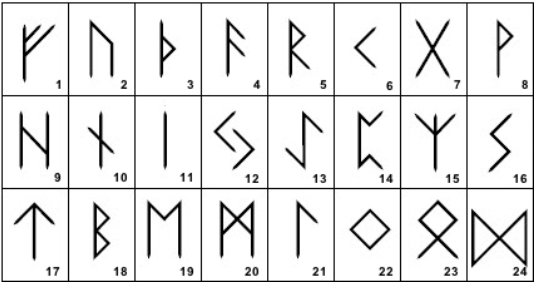Runes, the ancient symbols with roots deeply embedded in the rich tapestry of human history, have captivated minds and sparked imaginations for centuries. These mystical characters, often associated with magic and divination, have been used by various cultures across the world. In this exploration, we embark on a journey to unravel the enigma surrounding runes and answer a question that has intrigued many: How many runes are there?
The Origins of Runes
The history of runes can be traced back to the runic alphabets of ancient Germanic and Norse peoples. The runic scripts were used for writing, divination, and magical purposes, making them an integral part of the cultural and spiritual practices of these societies. The most well-known runic alphabet is the Elder Futhark, consisting of 24 characters. Each rune had a unique name and phonetic value, making it a versatile writing system.
Elder Futhark: The 24 Original Runes
The Elder Futhark, dating back to the 2nd to 8th centuries, is the oldest runic script. It consists of 24 runes, divided into three sets of eight called Aettir. Each rune carries its own significance and meaning, ranging from fertility and protection to guidance and strength. Some of the well-known runes from the Elder Futhark include Fehu (wealth), Thurisaz (thorn), and Ansuz (divinity).
The Evolution of Runes
As time passed and cultures evolved, so did the runic scripts. The Elder Futhark gave way to other runic alphabets, such as the Younger Futhark and the Anglo-Saxon Futhorc. These variations brought about changes in the number of runes, with the Younger Futhark containing 16 runes and the Anglo-Saxon Futhorc expanding to 33 runes.
Younger Futhark and Anglo-Saxon Futhorc
The Younger Futhark, used by the Norse during the Viking Age, simplified the runic system to 16 characters. The Anglo-Saxon Futhorc, on the other hand, added new runes to adapt to changes in language and sounds. Both of these variations reflect the dynamic nature of runes as they adapted to different linguistic and cultural contexts.
Contemporary Runes
In modern times, runes have experienced a resurgence in popularity, especially in the realms of divination, magic, and esoteric practices. Various runic systems exist today, each with its own set of characters and interpretations. Some contemporary rune sets include the 24 runes of the Elder Futhark, while others may incorporate additional symbols or modifications.
In our quest to understand the number of runes, we find a dynamic and ever-evolving system that has transcended time and culture. From the ancient Elder Futhark to the diverse runic systems of today, runes continue to inspire wonder and fascination. Whether used for writing, divination, or personal introspection, runes remain a timeless link to our mystical past, inviting us to explore the secrets they hold and unlocking the wisdom they convey.

